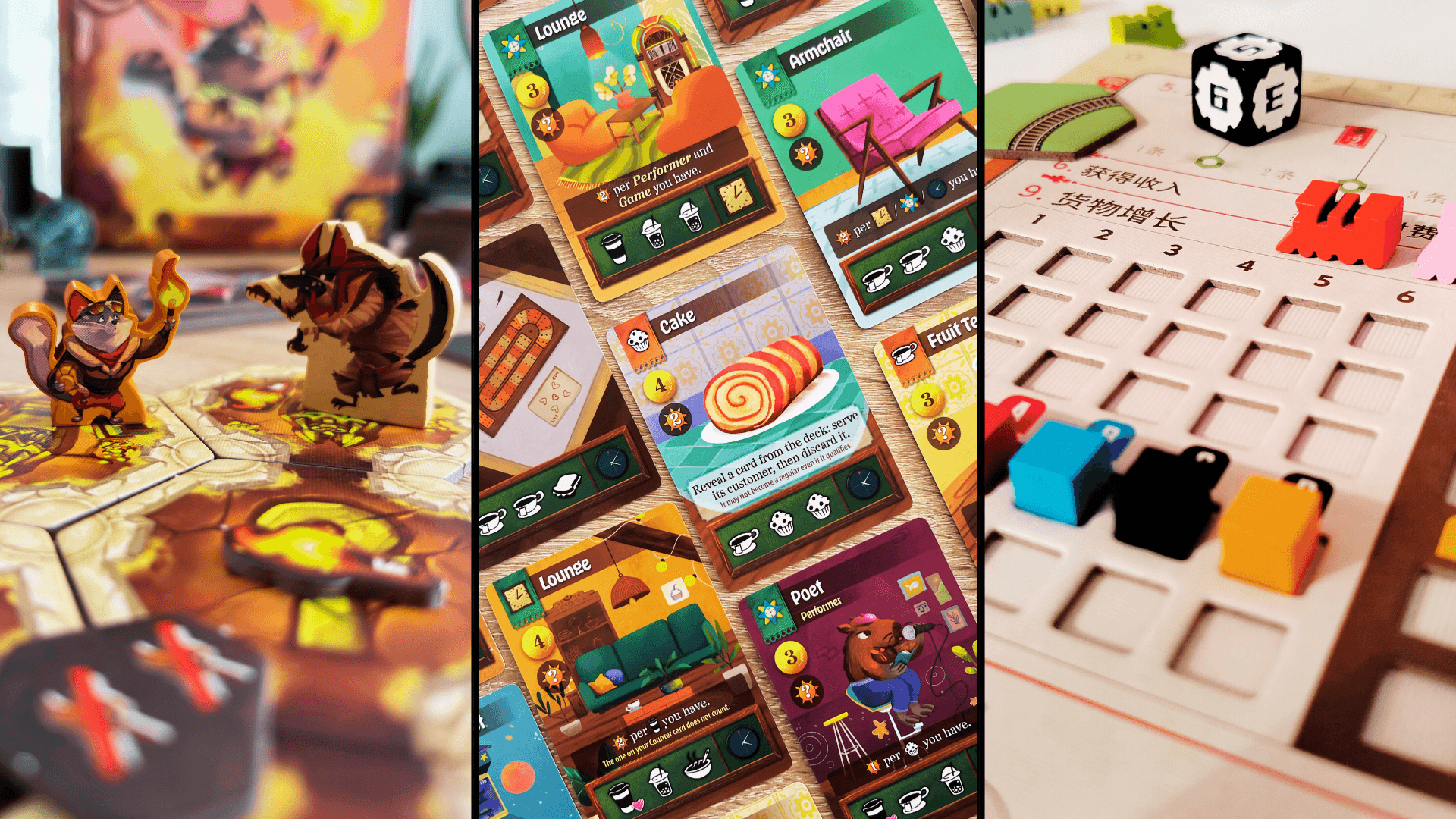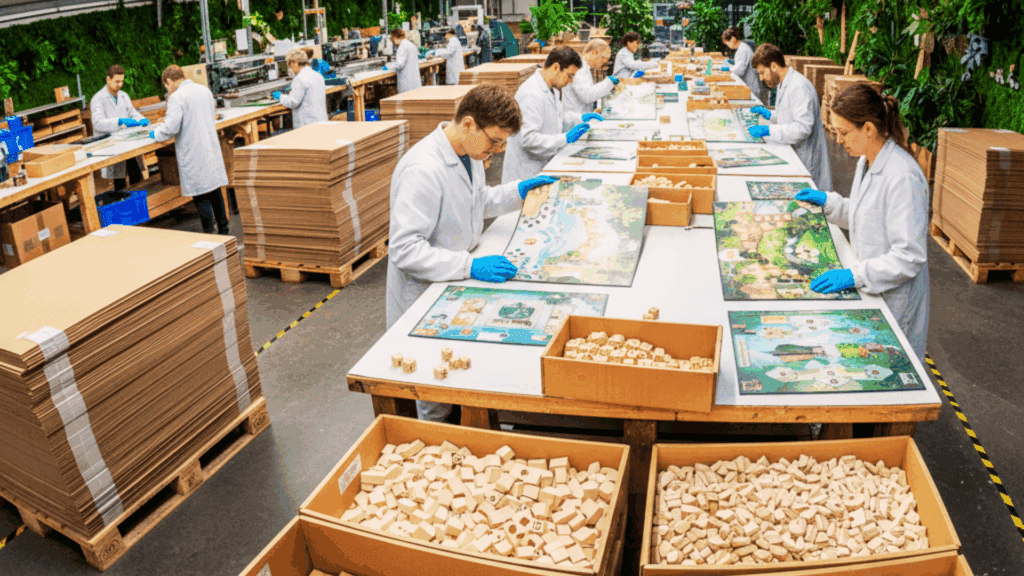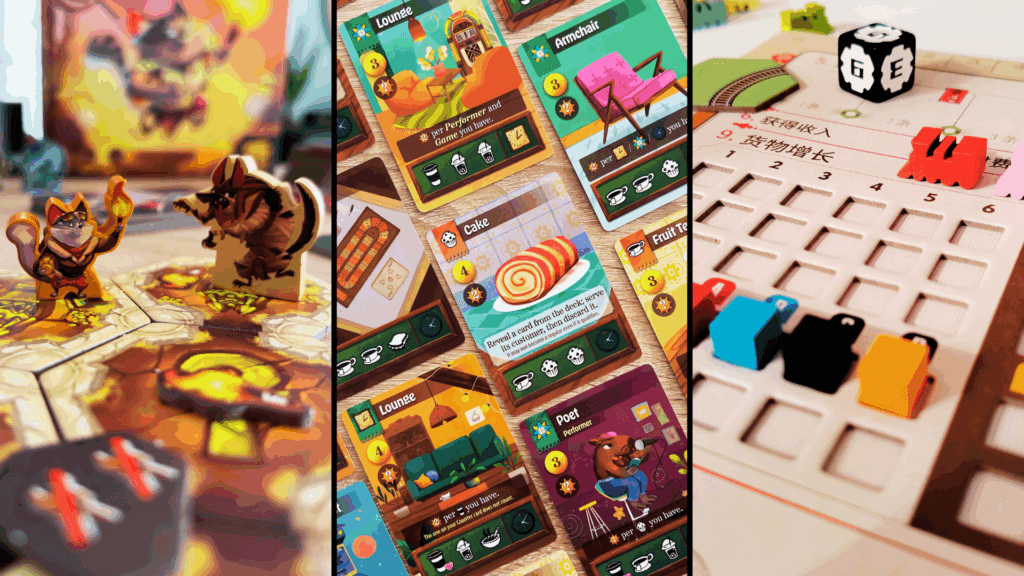

Dive into our insights for publishers & designers!


Date: 22/09/2025
From Worker Placement to Tile Placement: A Guide to the Most Popular Board Game Mechanics
The world of board games is vast, but a handful of mechanics have shaped the way modern tabletop experiences are designed and enjoyed. For both publishers and designers, understanding the nuances of these mechanics is essential, not only to craft engaging player experiences but also to communicate a game’s identity to its audience. At Rawstone, where we support publishers in turning prototypes into eco-friendly, market-ready board games, we see first-hand how mechanics influence design choices, production requirements, and ultimately, a game’s reception.
In this article, we’ll walk through four of the most popular board game mechanics: Worker Placement, Deck Building, Area Control, and Tile Placement – exploring their design implications, production considerations, and impact on the player experience.

Worker Placement
Definition: Players assign limited “workers” (meeples, tokens, or markers) to action spaces on the board to perform specific tasks. Once an action space is occupied, other players may be restricted from using it—or may need to pay more to access it.
Design & Experience:
- Creates tension by forcing players to prioritize actions.
- Balances resource scarcity with strategic planning.
- Encourages forward thinking and efficiency.
Production Perspective (Rawstone insight): Worker Placement often requires custom wooden or plastic components (meeples, tokens, resource markers). Publishers working with us frequently consider sustainable materials here – for example, FSC-certified wood or recycled plastics – which not only align with eco-conscious values but also resonate with today’s environmentally aware players.
Deck Building
Definition: Each player starts with a small, identical deck of cards. Over the course of the game, they acquire new cards to customize their deck, which they shuffle and reuse to execute actions.
Design & Experience:
- Creates a sense of personal progression as decks evolve.
- Offers replayability through different card acquisition strategies.
- Combines randomness (shuffling) with strategy (choosing cards).
Production Perspective: Deck-building games are highly card-centric, often requiring large print runs of high-quality cards with durable finishes. From a manufacturing standpoint, cardstock selection, finish (linen, matte, glossy), and sustainable paper sourcing are crucial. At Rawstone, we advise publishers on balancing premium tactile feel with eco-friendly printing options to meet both design and sustainability goals.
Area Control
Definition: Players compete to dominate specific regions of the board, gaining points or resources based on presence, majority, or influence.
Design & Experience:
- Encourages direct competition and interaction.
- Often involves dynamic shifts in power across the board.
- Appeals to players who enjoy strategy, rivalry, and tactical aggression.
Production Perspective: Area Control usually means a board rich with map-like illustrations and distinct regions. Component variety is key: miniatures, tokens, or markers that clearly differentiate players’ presence are critical for clarity. For publishers, Rawstone emphasizes component durability and ergonomic design, because in a competitive game, the clarity of who controls what is vital for both fairness and enjoyment.
Tile Placement
Definition: Players strategically place tiles to build patterns, landscapes, or structures, with placement rules that affect scoring and progression.
Design & Experience:
- Balances spatial reasoning with strategic foresight.
- Encourages creativity and a sense of shared world-building.
- Offers a tactile, visual satisfaction as the board expands.
Production Perspective: Tile Placement demands precision in component production. Tiles must be cut cleanly, with consistent sizing and durable materials to avoid warping. We often advise publishers to consider recycled cardboard or eco-friendly coatings to reduce environmental impact while ensuring longevity. From a professional standpoint, tile games also allow strong opportunities for stunning artwork, as the evolving mosaic of tiles becomes part of the experience.

Why Mechanics Matter for Publishers and Designers
Mechanics are more than just rules: they are the foundation of a game’s identity. Choosing between Worker Placement or Area Control is not just a creative decision but also a production one. For instance, a Deck Builder may appear straightforward in design, but it requires careful planning for printing, card balancing, and replayability. A Tile Placement game, meanwhile, might appear simple but hinges on precise component quality to ensure smooth play.
At Rawstone, we work closely with publishers to align game design goals with sustainable, high-quality production choices. Whether you’re a small indie team or an established publisher, understanding how mechanics interact with production challenges can save costs, reduce waste, and ultimately deliver a stronger game to market.
Final Thoughts
From Worker Placement to Tile Placement, these mechanics have defined the modern board game industry. They shape not only how players experience a game but also how publishers bring those games to life. For designers and publishers alike, mastering these mechanics – and their production implications – is a step toward creating games that are both memorable and sustainable.
If you’re exploring your next board game project, Rawstone is here to help turn your mechanic-driven ideas into eco-friendly realities.
Stay in the Loop!
Want updates on market trends, sustainability best practices, and new manufacturing opportunities?
👉 Subscribe to our newsletter http://eepurl.com/g3LCXT
Get monthly insights, exclusive resources, and behind-the-scenes stories from our projects around the world.
you might also be interested...
How to Bring Board Games to China: Licensing, Localization, and Market Entry Strategies for Indie Publishers
Learn how to bring board games to China through expert localization, licensing strategy, and integrated manufacturing. A complete guide for...
> Read MoreBoard Games and Stress Relief | How Play Supports Wellbeing
Recent studies show that both board games and role-playing games can reduce stress, improve social connection, and support emotional wellbeing...
> Read MoreWhat Matters Most in Board Game Manufacturing: Cost, Quality, or Sustainability?
Discover how board game publishers weigh cost, quality, and sustainability when choosing a manufacturer.
> Read MoreFrom Worker Placement to Tile Placement: A Guide to the Most Popular Board Game Mechanics
Discover how to design sustainable board game packaging that’s eco-friendly, functional, and cost-effective!
> Read More



